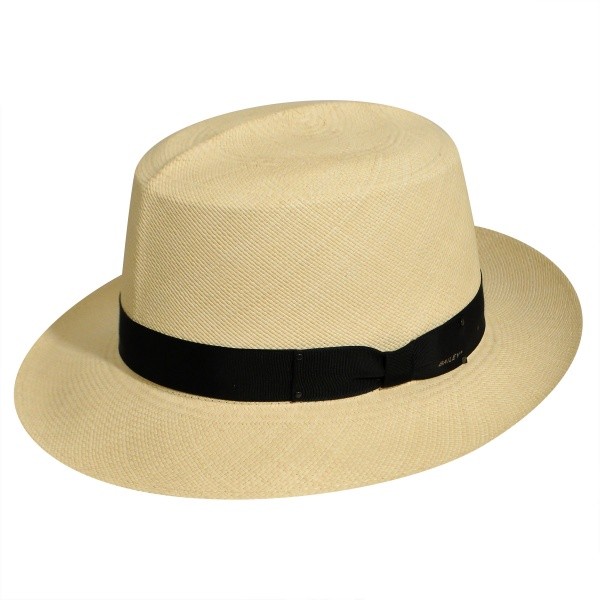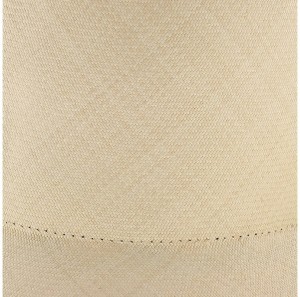
Foldable Panama Hat - Bailey Roll-up - Traclet boutique
There are several elements to evaluate the quality of a Panama hat, here are the main ones:
 The fineness of the weave
The fineness of the weave
The most important element when judging the quality of a hat. Indeed, it's by looking closely that one notices the fineness of the straw diameter. If these are fine, the number of stitches per square centimeter will be higher. This number determines the overall quality of a hat. It's worth noting that each doubling of this quality factor corresponds to a fourfold increase in the required work. This is also why a high-quality hat requires much more time.
Example: a Cuenca quality hat can take a minimum of 3 days to manufacture, while a good quality Montecristi can easily take 2 months. Be aware, unfortunately there is no standardized measurement system and each importer has its own unit of measure, so that one's grade 12 will mean a completely different result than another's grade 12. The same goes for derivatives such as Fino, Fino fino, Super Fino, Ultrafino, Museum, ...
The quality of the weave
Although the fineness of the weave is the most important basic factor in determining the quality of manufacture, it's the quality of the weave itself. This should be perceived according to the homogeneity and straightness over the entire surface of the hat. It's naturally important to never lose sight of the fact that this is not an exact science as the weaving is done by hand and there will always be irregularities.
The color of the hat
The color of the straw varies from one hat to another because the base color of the straw used also varies. This is also why we find lighter or darker shades. What really matters is, once again, the homogeneity of the color over the entire surface. If we find areas where the shade is very visibly different, it is obvious that the overall quality suffers. Nevertheless, it is perfectly normal to detect very slight variations in the base shade of the fibers, and by observing the stitches closely, we can even notice gray or reddish lines. In Europe, hats are often bleached to achieve a homogeneous color.
An example of bleached Panama hats, here the Borsalino Panama Fedora.
The Vueltas
The rings at the center of the hat's crown (also called "Vueltas") also help determine the quality of the Panama hat. If there are no rings, be wary! You can compare hats and their respective quality by orienting them towards a light source to better see the number of rings or different crowns that were necessary for the hat's assembly. These rings appear when new straw bands are added to the weave. This means that a higher number of these vueltas results in a finer and tighter weave. It ranges from 3 for an entry-level Cuenca to 8 for an entry-level Montecristi, while it goes up to 25 for a high-end one.
The number of stitches
A painstaking but effective technique to determine the quality of a Panama hat: the number of stitches per square centimeter called the "Montecristi Foundation Measurement System" or "Montecristi Count" (or Cuanta Montecristi).
This system consists of counting the exact number of stitches per square centimeter of the hat's surface. The most objective way to measure its fineness is therefore to count the weaving points (per inch, or about 2.5 cm). First, we measure the number of vertical weaves in a designated square centimeter, then we count the number of horizontal weaves on the same centimeter before multiplying them together to obtain the Montecristi count.
For example, we can take a weave of 25 horizontal and 30 vertical, which gives a stitch per centimeter of 750.
 Mesh of the Bailey Panama hat
Mesh of the Bailey Panama hat
.png)













